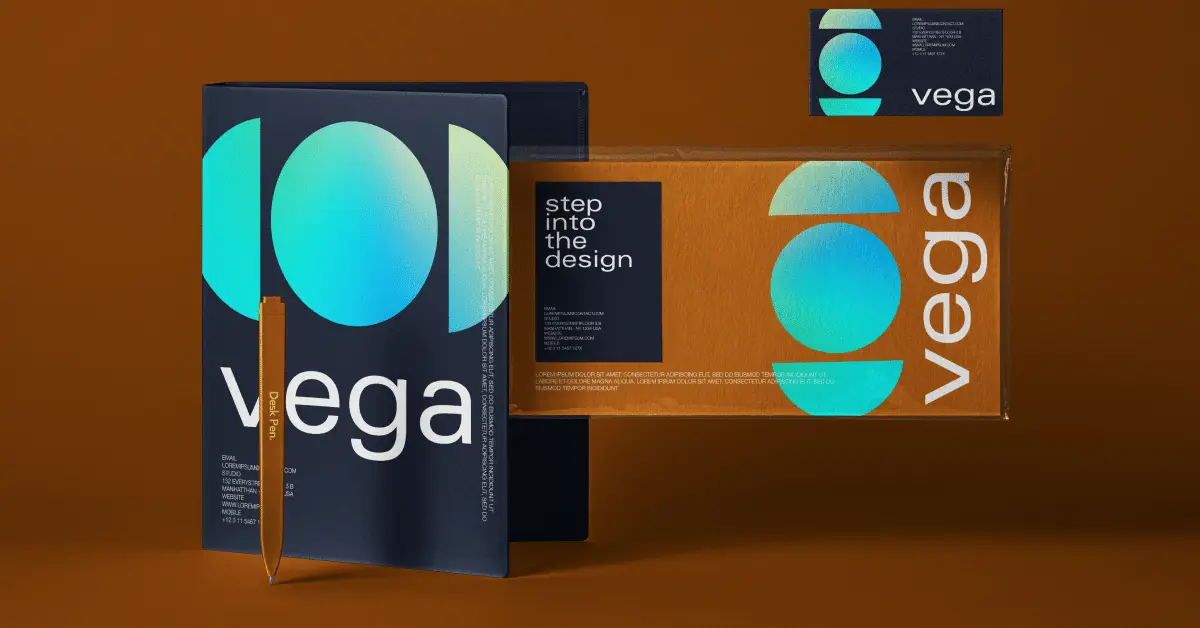This rulebook is a crucial piece of small business branding and should be created as early as possible, as this will be the face of your company. It also builds credibility and trust, it is what makes you memorable (think: the iconic red-and-white of Coca-cola), and it is what gives your company a purpose.
If this is your first foray into building this guide, you can follow our proven small business branding strategies below:
1. Define Your Brand
Defining the brand often stumps business owners. So here’s where we recommend you to start:
- Mission and vision — Your mission is a concise explanation of your purpose and intention. Your vision, meanwhile, creates a mental image of where and what you want to be. Some questions to guide you include: What is your company’s purpose? What difference do you want to see in the world? Where are you headed? What would your brand look like 5 to 20 years from now?
- Target audience — Having a clear buyer persona will help you come up with a relatable brand. A brand personality that resonates with millennials, for instance, will not be relatable for pre-teens.
- Value proposition — What is it that makes you stand out? Is there a gap in the market that you can fill? Look at your competitors and figure out how you can uniquely position yourself.
- Personality — What is the image that you want to project to your target market? Do you want to sound down-to-earth, professional, or sassy? These will be the qualities people will associate with your brand.
2. Design the Visual Elements
Make the visual elements of your brand book more captivating by following our guidelines:
- Logo — Be clear with the minimum size, proportions, colors, and variations, as well as any white space around it.
- Color palette — Include preferred swatches of your brand colors. The usual rule of thumb is a light color for backgrounds, darker color for the text, one neutral color, and a striking color. Don’t forget to identify their digital color equivalent (RGB and HEX codes), color match (Pantone), and print color (CMYK).
- Typography and font — Pick one font for the header and another for the body text, but make sure these two are different from your logo for contrast. In your style guide, include how the typefaces reflect your brand voice, which fonts are used for which purpose, tracking, kerning, and alignment.
- Images — Start with picking photos that worked well for your business. If you don’t have these yet, look at other brands and see what works for you. Collate these images and turn them into guidelines for your photos and illustrations.
Pro tip: If you’re running out of creative ideas, we’ve written an entire article on where you can get brand design inspirations.
3. Know How and Where to Publish Content
Your guide should also cover the content you publish:
- Language — The language you use across all platforms need to be consistent. Make sure your tone reflects the personality that you want your brand to have.
- Taglines — These are the short texts that succinctly capture the essence of your brand.
- Brand story — Write up the origin story of your brand. Where and how did you start? Why build this business? Is there an advocacy that you want to embody? This will forge that emotional connection between you and your target market.
- Where to market — Whether it’s traditional or digital, outline which platforms will give you the highest audience reach (e.g. social media, online ads, billboards, pamphlets, etc) to round up your small business branding and marketing.
4. Identify All Brand Collateral
Include a section in your brand book that lists down all small business branding collateral, including:
- Website design, layout, and images
- Physical products (e.g. packaging, logo use, product name)
- Social media photos, illustrations, and ads
- Store signage
- Printed collateral (e.g. business cards, envelopes, brochures, etc)
5. Avoid Branding Mistakes
When working with small companies, we often get asked: Why is branding important for small business, especially for one that’s only starting out with little revenue? We have seen so many companies have committed branding mistakes that eventually caused them to lose their bottomline. To help you out, here’s a list of what you should avoid:
- Don’t use different brand voices across platforms — Stick to what’s in your guide, whether you’re online or offline
- Don’t repeat what your competitors are doing — What works for them may not work for you
- Don’t copy how big brands look like — This will only make you look like a copycat
- Don’t stamp your logo everywhere and call it a day — Branding goes deeper than your logo; it should represent your business in every platform you’re visible
How To Build A Brand For A Small Business
As your business grows, you’ll learn more about your customers, your industry, and your brand. Keep updating your brand book. Consistency in branding is crucial, but flexibility is also important to give your brand the room to evolve.
With this small business branding guide in place, you will not only have a more memorable face to introduce to your customers; everyone in your team will also be on the same page as they represent your brand across all platforms.
If you want to tap our branding solutions for small business and our on-demand design team working on your brand guide, you can start a project with us today, and let’s get great designs done.



